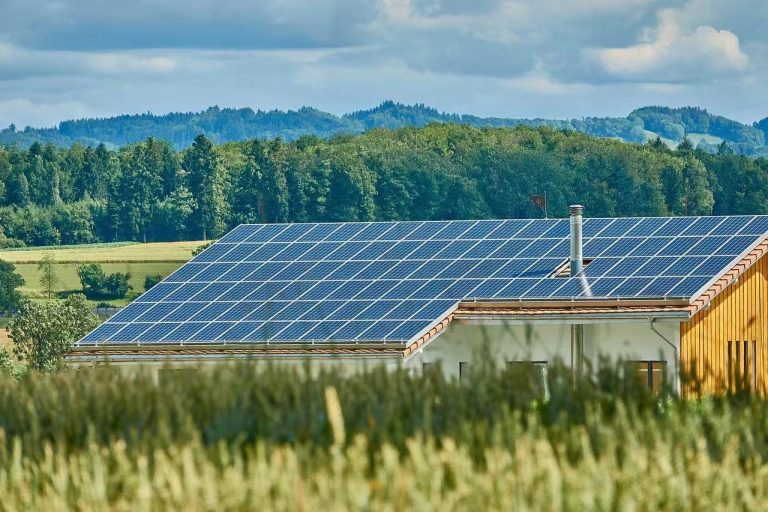
The solar inverter is an important part of a home solar panel system, acting as the brain that directs the solar panels. It converts the direct current (DC) generated by the solar panels into alternating current (AC) that can be used by appliances. In DC, current flows at a constant voltage in one direction. In alternating current, current flows in both directions in a circuit when the voltage changes from positive to negative. An inverter is just one type of power electronic device that regulates the flow of electricity.
Every solar panel system needs an inverter, and an efficient inverter means you’ll be able to use more of the energy produced by your solar panels while saving more electricity for your home. When the sun casts light on your solar panels, the light stimulates the movement of electrons, which creates an electric current. The inverter receives the direct current and transforms it through a transformer into the alternating current (AC) that most of the appliances in our lives require.
When your solar system is connected to the power grid, we call it a grid-tie inverter. When the solar power system produces more electricity than your household consumes, the PV inverter can feed the excess back into the grid. Conversely, if the solar panels don’t produce enough electricity to power the entire home, the inverter will mix solar energy with grid power to provide the home with electricity. Especially at night, when the solar panels are not producing power, the inverter needs to mix some of the grid power with the energy stored in the solar cells. Or even use 100% of the power from the grid.
Types of solar inverters
String inverters
A string inverter connects a group of panels (a string) to an inverter. This inverter converts the electricity generated by the entire string into AC power. While this setup is cost-effective, if any individual panel encounters a problem (e.g., shading), it can result in less power being generated on the string. A string inverter is the easiest to maintain because it is usually located in a basement, garage, or other easily accessible location. It is also inexpensive and easy to repair.
Microinverters
Microinverters are more expensive, but with microinverters, shading or damage to one panel will not affect the power that can be obtained from the other panels. The disadvantage of microinverters is that they are more expensive than string inverters. In addition, because they are more spread out on the roof, they can be a bit of a pain to maintain if something goes wrong and needs to be repaired. Microinverters are more suitable for more complex environments.
Hybrid inverters
A hybrid inverter is a combination of a PV inverter and a battery inverter, which has the advantage of converting DC power from the solar panels to AC power, as well as converting AC power from the grid to DC power to charge the solar cells. There are hybrid inverters that can even charge electric vehicles.
How long does a solar inverter last?
Most inverters typically have a life expectancy of 10 to 15 years due to the need to continuously convert current, but can last up to 20 years if installed in a cool, well-ventilated area and properly maintained.
How to Repair a Solar Inverter?
Repairing a solar inverter is a highly technical task that requires some electrical knowledge and skills. Before starting any repairs, make sure the inverter is powered off and disconnected from the solar panels and the grid. Use appropriate personal protective equipment (such as insulated gloves and goggles) to ensure safety.
Start by checking the outside of the inverter, that cables and connectors are securely connected etc. Most modern solar inverters have displays or indicators that show error codes or status messages. Check the user manual for the meaning of these error codes.
If the error code indicates an internal component failure, you will need to open the inverter, measure the voltage and current with a multimeter and check further.
Some inverter problems may be caused by firmware issues. Check to see if the manufacturer provides the latest firmware updates and follow the instructions.
After completing all repairs, reassemble the inverter and connect all cables. Power up and test the inverter to ensure it is working properly. Monitor the output and status of the inverter to confirm that the problem has been resolved.
It is recommended to seek the help of a professional technician if you do not have sufficient electrical knowledge and skills. The internal voltage of the inverter is high and mishandling it may cause serious injury. If there is a problem with the inverter under warranty, it is a priority to contact the manufacturer or an authorized service center for repairs to avoid voiding the warranty.

